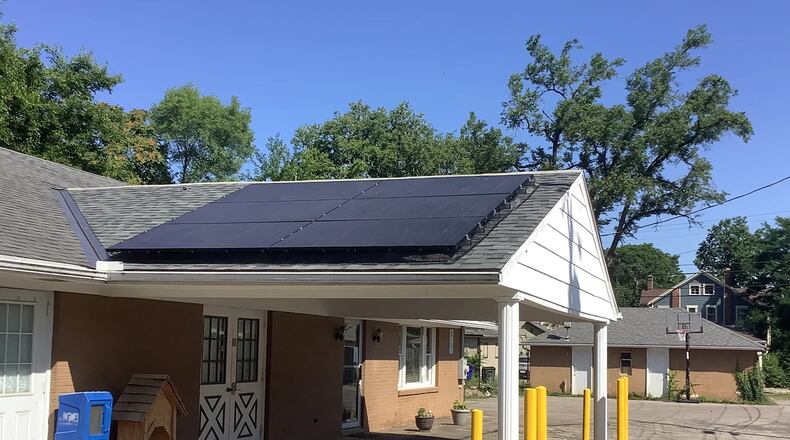In Ohio, solar energy is on the rise, in part because of the improvement in solar panels over the past decade and because of tax credits that help defray the initial cost.
Mike Fanelli is a solar homeowner in Centerville. His system does more than power his house, however.
“My goal with solar was to generate enough electricity to charge our two electric vehicles,” Fanelli said. “It’s doing that and more!”
Like most folks considering an investment in solar power, Fanelli did his research. What he discovered was an eye opener.
“I know quite a few people who have solar panels, including my brother and my friends from church,” Fanelli said. “Living in Ohio hasn’t been a problem because the panels are always working, even on cloudy days.”
Fanelli connected with SUN (Solar United Neighbors), a nonprofit organization that works in Ohio and throughout the country to represent the needs and interests of solar owners and supporters. SUN’s Miami Valley solar co-op helped Fanelli get a bulk discount on his solar panels and coupled with the 30% federal tax credit now in place, Fanelli was able to reduce his initial cost of $12,000 down to $9,000.
“I’m going to be able to pay off the panels in a shorter period of time,” Fanelli said.
As for the often-cloudy days in Ohio, Fanelli said that when he was researching, he found that even in Cleveland, which is one of the cloudiest cities in the country (about 200 days of clouds annually), solar energy is not only a possibility but also works well.
“It all depends on the angle of your roof,” Fanelli said. “If your roof is facing south, that’s almost perfect. Mine is facing southeast, so I don’t get as much as others could, but I’m still powering both of my vehicles with enough left over to power my home.”
When the weather is mostly sunny and not too hot or cold, times that Fanelli refers to as the “shoulder months,” he sees very low utility bills. Heating and cooling use more power so when those are running, stored solar power is used at a faster rate.
“I have 11 panels, which is not that many,” Fanelli said. “But because I have a chimney and mature trees that was the most I could get.”
Fanelli’s savings since installing his panels in the spring is quickly adding up. He estimates saving about $1,000 annually. And modern solar panels will work at full capacity for 25-30 years, losing about 1% capacity annually.
More and more businesses in the region are turning to solar power. The Dayton Friends, a Quaker meeting and part of the Religious Society of Friends participated in SUN’s Miami Valley Co-op as part of their mission of stewardship and helping others.
Meeting member Dan McGregor said the group went solar in June of this year.
“We wanted to put panels up for both the purpose of reducing our overall electric bill, but also to align ourselves with our values of living sustainability,” McGregor said.
The group also likes the idea of having their panels visible from the street so others will see what they have done and possibly follow suit. The Dayton Friends also took advantage of the federal renewable energy tax credit to help make their solar installation a reality.
“We’ve been thinking about this for a number of years,” McGregor said. “But it wasn’t until the nonprofit eligibility for the credit became available that we really started to look at it more seriously.”
How do solar panels work to turn sunshine into energy? Those panels installed on a roof act as conduits and invert sunlight to direct current (DC) electricity. Then an inverter converts the electricity from DC to alternating current (AC) and the home or business is then able to consume the energy produced by the system. As a bonus, the solar array connects to the local grid, allowing owners to receive electricity even when their solar panels aren’t producing enough or any at all.
“Net metering” is a process that allows solar panel users to export any excess electricity back onto the electric grid and get compensated for that electricity. According to SUN in their Go Solar Guide, this process ensures that fair credit is received for all the solar electricity produced in a home or business, whether it is consumed immediately or exported to the grid.
This helpful guide also covers cost, the best places to install solar panels (it isn’t always a roof), potential savings, warranties and more. To find out more about solar energy in Ohio, log on to solarunitedneighbors.org
About the Author





